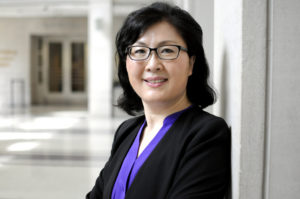People who live near green spaces were 2.5 years younger biologically

Northwestern scientists have conducted a new study to see if living near green spaces, like parks and areas with a lot of plants, can affect how our bodies age and contribute to overall healthy aging.
More green spaces were associated with slower biological aging, according to a Northwestern Medicine report published in Science Advances. People who lived near more green spaces were biologically 2.5 years younger, on average, than those who live near less greenness.
The benefits of green spaces were not equal, however, as scientists found variations in race, sex and socioeconomic status.
“When we think about staying healthy as we get older, we usually focus on things like eating well, exercising and getting enough sleep,” said Kyeezu Kim, PhD, first author on the study and a postdoctoral scholar in Preventive Medicine. “However, our research shows that the environment we live in, specifically our community and access to green spaces, is also important for staying healthy as we age.”
The study is the first to investigate the effect of long-term exposure (about 20 years of exposure) on urban green space and biological aging, specifically using DNA methylation-based epigenetic age.
DNA methylation-based epigenetic age refers to chemical changes in DNA that may influence various age-related health outcomes. Epigenetic age is a biomarker of aging associated with age-related disease and all-cause mortality.
The investigators discovered variations in the benefits of green spaces for biological aging based on race, sex and socioeconomic status.
The study involved more than 900 individuals residing in four cities across the U.S.: Birmingham, Ala.; Chicago; Minneapolis; and Oakland, Calif. This sample represents a subset of a larger-scale cohort study conducted in the U.S., the Coronary Artery Risk Development in Young Adults (CARDIA).
Investigators evaluated the 20-year exposure to surrounding green spaces using satellite imaging, which allowed them to quantify the overall vegetation (greenness proportion) as well as the presence of major parks near the participants’ residences. To assess participants’ biological age, scientists analyzed their blood DNA methylation.
“Our study highlights that the natural environment, like green space, affects your health at a molecular level (changes in DNA methylation), which was detectable in blood,” said senior author Lifang Hou, MD, PhD, chief of Cancer Epidemiology and Prevention in the Department of Preventive Medicine and senior author of the study. “Our research team has extensively investigated the molecular-level changes associated with various age-related health outcomes, including cardiovascular disease, cancer, cognitive function and mortality. This particular study contributes to our understanding of how the natural environment influences these health outcomes.”
The disparities observed in the study based on race, sex and socioeconomic status underscore the importance of conducting future research to investigate the role of social determinants of health in relation to the surrounding environment and healthy aging, according to the authors.
“We believe our findings have significant implications for urban planning in terms of expanding green infrastructure to promote public health and reduce health disparities,” Kim said.
Other Northwestern authors are Brian Joyce, PhD, research assistant professor of Preventive Medicine in the Division of Cancer Epidemiology and Prevention; Drew Nannini, PhD, a postdoctoral fellow in the Hou laboratory; Yinan Zheng, ’17 PhD, assistant professor of Preventive Medicine in the Division of Cancer Epidemiology and Prevention; Donald Lloyd-Jones, MD, ScM, chair and the Eileen M. Foell Professor of Preventive Medicine; and Douglas Vaughan, MD, chair and Irving S. Cutter Professor of Medicine.
Hou is also director of the Center for Global Oncology, a joint center between the Robert H. Lurie Comprehensive Cancer Center of Northwestern University and the Robert J. Havey, MD Institute for Global Health, and is also director of Global Health at the Lurie Cancer Center.
Joyce and Zheng are also members of the Lurie Cancer Center.
This work was supported by National Heart, Lung, and Blood Institute grants HHSN268201800005I and HHSN268201800007I (University of Alabama at Birmingham); National Heart, Lung, and Blood Institute grant HHSN268201800003I (Northwestern University); National Heart, Lung, and Blood Institute grant HHSN268201800006I (University of Minnesota); National Heart, Lung, and Blood Institute grant HHSN268201800004I (Kaiser Foundation Research Institute); the Intramural Research Program of the National Institute on Aging (NIA) and an intra-agency agreement between NIA and NHLBI grant AG0005; National Heart, Lung, and Blood Institute grant R01HL114091; American Heart Association grant 19TPA34830085; American Heart Association grants 17SFRN33700278and 14SFRN20790000; National Institute on Aging of the National Institutes of Health grant R01AG081244; National Institute on Aging of the National Institutes of Health grant R01AG069120.






